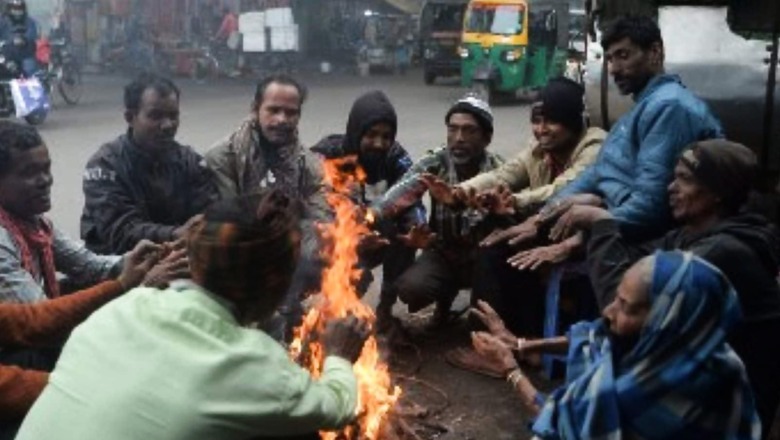
views
Even as unpredictable weather conditions hound parts of India as a delayed monsoon withdrawal nears, there is news of an extremely cold winter in North India due to the La Nina that has emerged in the Pacific Ocean. The La Nina weather pattern, which causes frigid winters in the northern hemisphere, has prompted weather agencies around the world to issue warnings of below-normal temperatures.
January and February will be particularly cold in some northern states of India with temperatures set to fall as low as 3 degrees Celsius before recovering, according to a report in Bloomberg. The report also stated that a colder winter meant energy crises in several Asian nations, particularly China that is a top energy consumer. India is also grappling with surging fuel prices like other countries in Asia. However, unlike other countries, there is lower energy consumption in India as demand for air conditioning decreases.
The La Nina effect is already being seen in India in the form of extreme weather events over the past few weeks. Heavy rainfall and delayed withdrawal of the monsoon are both related to the La Nina, which is associated with the cooling of the Pacific waters and usually results in good rainfall activity and some remnants of cyclonic circulation from the Pacific Ocean.
EARLY WINTER IN HIMACHAL, HEAVY RAINS ELSEWHERE
Temperatures have already dropped to sub-zero in some parts of Himachal Pradesh, such as Lahaul-Spiti and Kinnaur, due to fresh snowfall on Sunday. Winter has arrived early in the northern state with Keylong in Lahaul-Spiti recording minus 5 degrees Celsius, according to the data from the IMD centre in Shimla. The state capital also recorded a minimum temperature of 6.4 degrees Celsius in the last 24 hours.
Three tourists from Mumbai died in Kinnaur district due to snowfall and extremely bad weather conditions, while more than 50 roads were blocked in the upper regions of HP, such as Lahaul-Spiti and Chamba, bringing life to a standstill.
India is already witnessing unusually heavy rains in several parts of the country, particularly the hill state of Uttarakhand in the North and coastal Kerala in the South. The India Meteorological Department (IMD) said the country had received 41 per cent more rainfall than normal from October 1 to 21 with Uttarakhand alone recording more than five times its normal precipitation.
Heavy rains were also witnessed in Jammu and Kashmir along with snowfall in the higher reaches of the union territory, causing landslides and major road blocks. The Met department reported a drop in minimum temperatures across North India with national capital Delhi recording a minimum temperature of 19 degrees Celsius on Sunday.
WHY IS INDIA EXPERIENCING EXTREME WEATHER
IMD director general Mrutunjay Mohapatra said October saw the formation of two low pressure areas (cyclonic circulations that bring in rainfall and strong winds). In Uttarakhand, he explained, the interaction between western disturbance and the low pressure area resulted in heavy rains this week.
M Rajeevan, former ministry of earth sciences secretary who has been studying the Southwest monsoon for over three decades, said there was a delayed withdrawal of the monsoon. This year, the withdrawal of the Southwest monsoon from Northwest India commenced on October 6, the second-most delayed withdrawal since 1975, he said.
The IMD said complete monsoon withdrawal from the country is expected around October 26. Rajeevan said the active conditions of Southwest monsoon that began in September have not yet ended, and that such an active phase did not last for a month but this time it had. He said warming of Bay of Bengal and Arabian Sea was another factor as it had helped in forming a cyclonic circulation. This year, it was aided by La Nina conditions, he added.
HOW COLD WAS IT LAST YEAR
Several places in North India, including Uttar Pradesh and Punjab, recorded a minimum temperature below the five-degrees Celsius mark, with cold wave conditions and dense fog. Delhi, too, witnessed a colder than usual November with the mean minimum temperature hovering around 10 degrees Celsius. The average minimum temperature was 12.9 degrees Celsius.
(With PTI inputs)
Read all the Latest News , Breaking News and IPL 2022 Live Updates here.




















Comments
0 comment